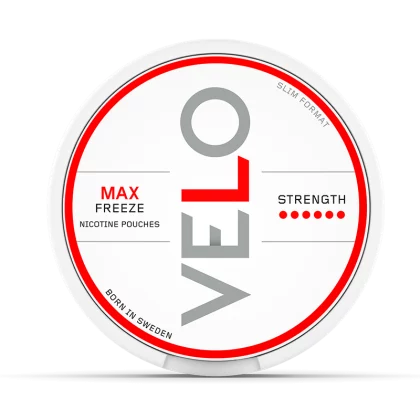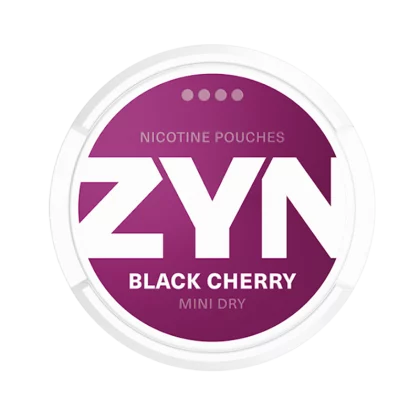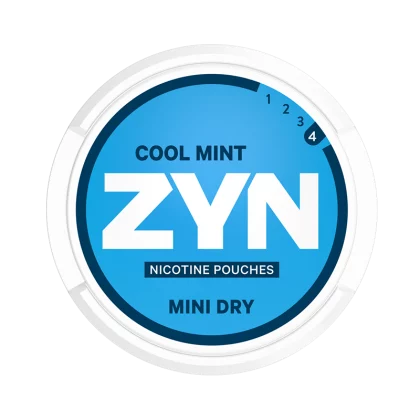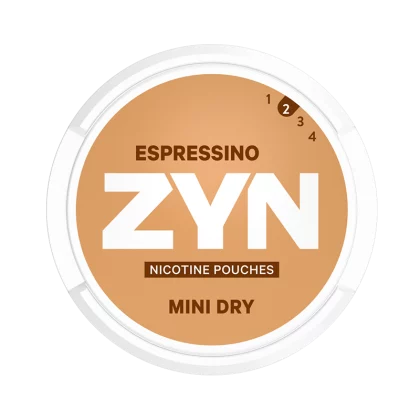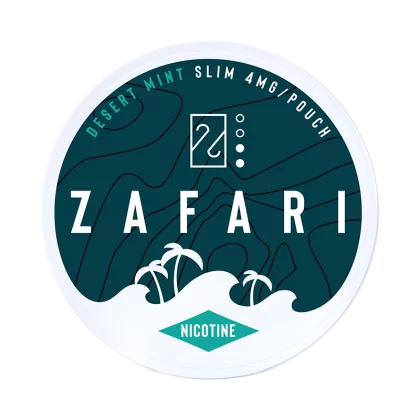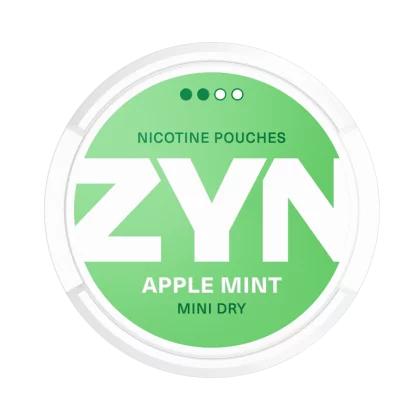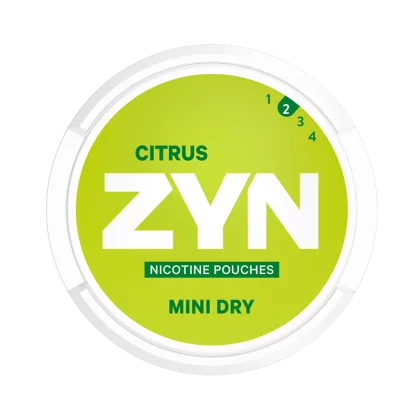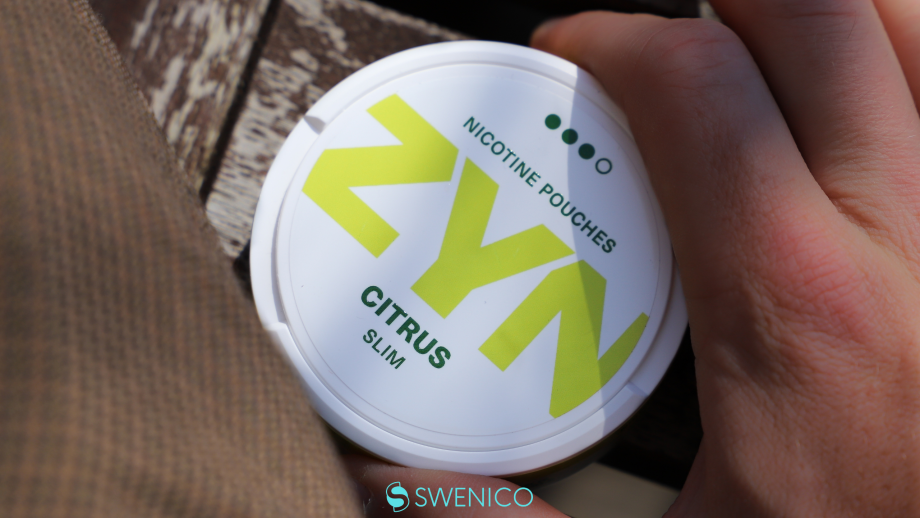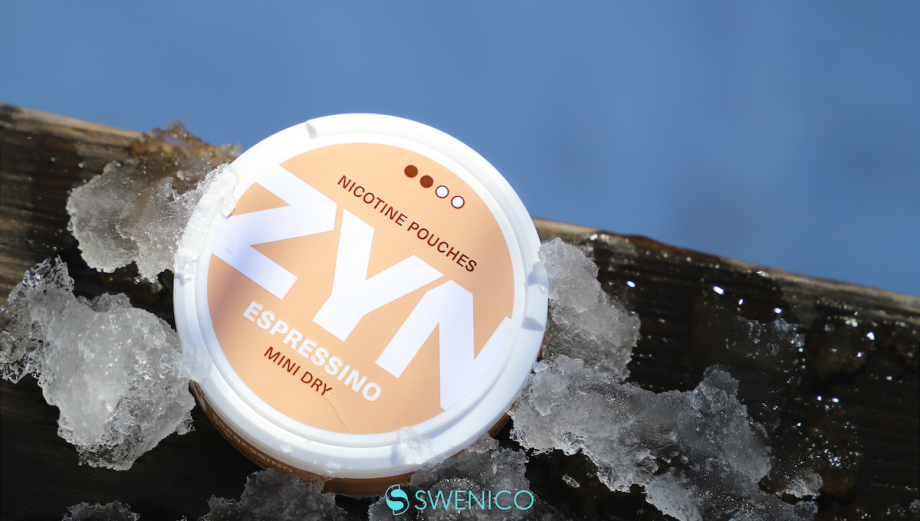There are quite a few studies on traditional tobacco snus and nicotine pouches that have studied the health effects and potential health risks of these products.
But the studies are often long, complicated, and difficult to understand.
To make it easier to understand what researchers have concluded in their studies, we have compiled different study results one by one in an easy-to-understand way.
It is important to point out that the conclusions in various studies about snus and nicotine pouches sometimes contradict each other. This may be due to several different factors, including sample, research period, and what has been analyzed.
Furthermore, some studies have not made a distinction between causality and correlation, which can result in hasty or incorrect conclusions. In addition, it’s important to point out that tobacco snus is in a sense a completely different product from nicotine pouches since they contain tobacco unlike nicotine pouches, despite the fact that they are used in the same way. As such, different results can be expected in some cases.
Our recommendation is to look at the biggest and best studies and their conclusions and then form your own opinion about these products. And that’s exactly what we hope this comparison will help you do.
The problem with studies on snus and nicotine pouches
The main problem with some studies is that they draw conclusions about snus and tobacco-free nicotine pouch by using smokers as the test persons. When the studies are to investigate the impact of nicotine on health, they analyze smokers.
As everyone understands, this creates problems with the reliability of these studies when applied to snus and tobacco-free nicotine products because smoking comes with a host of well-documented health risks (primarily the inhalation of smoke into the lungs) that nicotine pouches and snus do not.
Because of this, it is only possible to use studies that have only analyzed snus and tobacco-free nicotine pouches to draw conclusions about each product. It is not possible to draw reliable conclusions about the health effects of nicotine from snus or nicotine pouches when it is the act of smoking that has been studied.
In addition, it is also possible that the health effects differ between tobacco snus and tobacco-free snus as tobacco-free nicotine pouches do not contain tobacco, but since nicotine pouches are a relatively new product on the market, more studies are needed. However, it is important to consider which basis the study uses when reading studies that specifically focus on nicotine’s health effects. If the studies use, for example, smokers as a basis, incorrect conclusions can be drawn as the effects of smoking can be mixed into the results about the health effects of nicotine pouches, even if some possible effects are directly linked to the immigration of smoke and not the nicotine itself.
In the future, it is important that studies are carried out on tobacco-free nicotine pouches and snus separately, as there is a difference between these products, which can cause the results to be different. In recent years, a number of studies have been conducted that solely study the health effects of tobacco-free nicotine pouches, and more studies will be conducted in the future. BAT (British American Tobacco), which owns Velo, has commissioned a number of studies on nicotine pouches, the results of which we look at in more detail below.
Facts and conclusions for English studies have been translated into Swedish for this compilation. To see these in their original format, refer to the source.
Snus and Nicotine Pouches – What Do Studies Say About the Health Effects?
Below we have compiled some of the most important conclusions and results from studies conducted on snuff and nicotine pouches.
Nicotine, which occurs in concentrations of 0.5 – 1% in Swedish snus, has well-documented pharmacological effects on the central nervous system. However, there is no evidence that nicotine per se or any of its metabolites causes cancer in humans
Adlkofer et al. 1995
Nicotine itself does not increase the risk of lung disease such as emphysema and is not considered a risk factor for cardiovascular disease
Lee, P N. Summary of the epidemiological evidence relating snus to health. Regulatory Toxicology and Pharmacology 59 (2011) 197–214
Compared to cigarette smoking, the use of Swedish snus is associated with significantly fewer health risks.
David Azzopardi, Chuan Liu & James Murphy (2021) Chemical characterization of tobacco-free “modern” oral nicotine pouches and their position on the toxicant and risk continuums, Drug and Chemical Toxicology, DOI: 10.1080/01480545.2021.1925691
Nicotine pouches are similar in appearance/use to snus, but without tobacco, they have the potential to further reduce tobacco-related harm.
David Azzopardi, Chuan Liu & James Murphy (2021) Chemical characterization of tobacco-free “modern” oral nicotine pouches and their position on the toxicant and risk continuums, Drug and Chemical Toxicology, DOI: 10.1080/01480545.2021.1925691
Compared to snus, nicotine pouches had lower levels of 10 harmful constituents and comparable/undetectable levels of an additional 13. Across product categories, nicotine pouches and nicotine replacement products had the lowest toxicant profiles and estimates of relative toxic exposure. Based on the current chemical analysis and the estimated exposure, the use of nicotine pouches seems likely to expose users to lower levels of toxic compounds than Swedish snus, which is known to produce lower levels of harm than in connection with tobacco smoking.
David Azzopardi, Chuan Liu & James Murphy (2021) Chemical characterization of tobacco-free “modern” oral nicotine pouches and their position on the toxicant and risk continuums, Drug and Chemical Toxicology, DOI: 10.1080/01480545.2021.1925691
The health risks of cigarette smoking are well established, but most smoking-related illnesses are not caused directly by the addictive compound nicotine, which is considered by regulatory and health agencies to be relatively harmless at the levels found in tobacco, but not by the toxic chemicals in the inhaled smoke from burning tobacco.
US Department of Health and Human Services (DHHS) 2014
Several studies have explored the “Swedish experience” as a potential factor in reducing tobacco harm. In Sweden, the overall use of tobacco products is similar to that of other European countries, but the incidence of smoking-related mortality is among the lowest in Europe (Ferlay et al. 2013, Swedish Match 2020). This is because the majority of Swedish tobacco users use snus, a moist oral smokeless tobacco product (STP), rather than cigarettes.
EC 2017, Clarke et al. 2019, WHO 2019
Compared to snus, nicotine pouches contained lower levels of the metals arsenic, cadmium, chromium, Ni and lead, the nitrosamines NDMA, NNK and NNN, acetaldehyde and ochratoxin. Formaldehyde levels were broadly comparable between the two product types, but none of the measured harmful and potentially harmful constituents were higher in nicotine pouches than in snus.
David Azzopardi, Chuan Liu & James Murphy (2021) Chemical characterization of tobacco-free “modern” oral nicotine pouches and their position on the toxicant and risk continuums, Drug and Chemical Toxicology, DOI: 10.1080/01480545.2021.1925691
In addition to the greater number of toxins detected in snus, the levels of those quantified were higher in snus than in nicotine pouches, except for nicotine and formaldehyde. Overall, the toxicant analysis suggests that nicotine pouches have the potential for a lower toxic profile compared to Swedish snus, and comparability with nicotine replacement therapy products, consistent with the tobacco-free composition of both nicotine pouches and nicotine replacement therapy products.
David Azzopardi, Chuan Liu & James Murphy (2021) Chemical characterization of tobacco-free “modern” oral nicotine pouches and their position on the toxicant and risk continuums, Drug and Chemical Toxicology, DOI: 10.1080/01480545.2021.1925691
The data indicate that, compared to conventional smoking, nicotine pouch use would result in lower daily exposure to 16 of the 18 toxins, while snus use would result in lower exposure to 10 of the 18 toxins.
David Azzopardi, Chuan Liu & James Murphy (2021) Chemical characterization of tobacco-free “modern” oral nicotine pouches and their position on the toxicant and risk continuums, Drug and Chemical Toxicology, DOI: 10.1080/01480545.2021.1925691
Although regulatory and health agencies agree that nicotine at the level of exposure from tobacco products is comparatively harmless, it is toxic in high doses.
David Azzopardi, Chuan Liu & James Murphy (2021) Chemical characterization of tobacco-free “modern” oral nicotine pouches and their position on the toxicant and risk continuums, Drug and Chemical Toxicology, DOI: 10.1080/01480545.2021.1925691
In conclusion, nicotine pouches may provide a lower source of nicotine exposure for current smokers seeking a substitute for cigarettes, particularly for those who find nicotine replacement therapy products ineffective. Based on their similarity to snus in physical use, but due to the absence of tobacco, lower toxicity profile and reduced ADC, nicotine pouches may also pose fewer health risks than snus when smokers transition to using them alone. The content of nicotine pouch toxic substances and estimates of exposure in comparison with other products suggest that nicotine pouches can be placed between Swedish snus and nicotine replacement therapy products on the tobacco and nicotine toxicity continuum.
David Azzopardi, Chuan Liu & James Murphy (2021) Chemical characterization of tobacco-free “modern” oral nicotine pouches and their position on the toxicant and risk continuums, Drug and Chemical Toxicology, DOI: 10.1080/01480545.2021.1925691
Due to the lack of tobacco components, there is a potential for these products to have a reduced risk status compared to snus, for which there is already epidemiological evidence suggesting reduced cancer incidence compared to smoking. The risk of using snus is thought to be only 1% of that of traditional cigarette smoking.
https://www.sciencedirect.com/science/article/pii/S2214750021000317#!
In addition, a recent chemical analysis reported that modern oral products (nicotine pouches) have lower toxic levels compared to Swedish-style snus products.
https://www.sciencedirect.com/science/article/pii/S2214750021000317#!
This study shows that flavor and nicotine strength (4−11 mg) do not increase the overall toxicity of modern oral products in a short-term analysis. Flavored nicotine products have a key role to play in providing alternatives for smokers, as demonstrated by mainstream oral nicotine replacement products and e-cigarettes.
https://www.sciencedirect.com/science/article/pii/S2214750021000317#!
The reduced harm potential of Swedish-style snus has been clearly demonstrated, by extension, tobacco-free modern oral products, with nicotine levels comparable to levels found in Swedish-style snus, can be expected to have similar or greater harm reduction potential and therefore this study contributes to the underlying science used to determine the risk profile of the emerging modern oral product category as an alternative to smoking. The data produced in this study show that LYFT is less cytotoxic, across multiple flavors and nicotine strengths than a corresponding reference snus product and comparison products that can be replicated in both H292 and HGF. H292s and HGFs showed parity of response to MOPs extract and the higher throughput compatible H292s were selected to screen wave 2 variants.
https://www.sciencedirect.com/science/article/pii/S2214750021000317#!
Despite the reported links between smokeless tobacco use and oral cancer, annual death rates for oral cancer in Sweden average 2.8 per 100,000 over 30 years, which is lower than the averages for the United States and Great Britain. A meta-analysis of the health effects of snus use, published in 2011, concluded that it was not associated with oropharynx, esophagus, stomach, pancreas, lung or heart disease or stroke, and the risk of using snus is about 1% of that of smoking.
https://www.sciencedirect.com/science/article/pii/S0278691520306037?via%3Dihub
Tobacco-free ‘modern’ oral nicotine pouches are similar in appearance and use to Swedish-style snus, but without tobacco and therefore tobacco-specific nitrosamines, which can further reduce the risk to consumers. Recent chemical analysis studies have reported lower levels of toxins in modern oral products compared to Swedish snus.
https://www.sciencedirect.com/science/article/pii/S0278691520306037?via%3Dihub
However, there is no evidence that nicotine per se or any of its metabolites causes cancer in humans.
Adlkofer, F.X. 1995. Involvement of nicotine and its metabolites in the pathology of smoking-related diseases: Facts and hypothesis. In: P.B.S. Clarke, M. Quik, F. Adlkofer. & K. Thurau (Eds.), Advances in Pharmacological Sciences, Effects of Nicotine on Biological Systems II. (pp. 17-25).
Nicotine also does not cause lung diseases such as emphysema and is not considered a risk factor for cardiovascular disease.
(Lee, P N. Summary of the epidemiological evidence relating snus to health. Regulatory Toxicology and Pharmacology 59 (2011) 197–214).
Less than half of the amount of nicotine in a snus is leached out when used.
https://www.swedishmatch.com/sv/Snus-och-halsa/Forskning-kring-snus/Nikotinupptag-/
The concentrations of tobacco-specific nitrosamines, traditionally the most frequently analyzed and reported trace components in smokeless tobacco products due to their carcinogenic potential demonstrated in laboratory animals, have decreased significantly in Swedish snus between the early 1980s and 2000. This appears to be mainly due to improvements in the Swedish snuff manufacturing process that was introduced in the early 1980s, including both technical changes in the production process and the introduction of more rigorous quality controls of raw materials.
https://www.swedishmatch.com/globalassets/documents/other/environ-review-of-the-scientific-literature-on-snus-3-31-10.pdf
Swedish snus has been investigated in in vitro assays for genotoxicity, cellular proliferation and epithelial changes in human biopsy samples and cell cultures. The studies support the conclusion that Swedish snus is not genotoxic in mammalian cells and a recent study also reported that Swedish snus is not mutagenic, cytotoxic or clastogenic.
https://www.swedishmatch.com/globalassets/documents/other/environ-review-of-the-scientific-literature-on-snus-3-31-10.pdf
Well-controlled epidemiological evidence suggests that Swedish snus is not associated with oral cavity cancer. Although studies are mostly consistent and show no association between Swedish snus use and esophageal or stomach cancer, a single recent study observed increased risks for these cancer sites. Further research will help resolve this uncertainty. A limited number of epidemiological studies have failed to show that Swedish snus is a significant risk factor for the following cancers: kidney, bladder, lung cancer, skin cancer, hematopoietic cancer and all cancers combined. Two studies suggest that Scandinavian smokeless tobacco may be associated with increased risk of pancreatic cancer among specific subgroups of the population. There are inconsistencies between the two studies and the interpretation of the studies has been the subject of much scientific debate. Further research is needed to resolve the connection between the use of Swedish snus and pancreatic cancer.
https://www.swedishmatch.com/globalassets/documents/other/environ-review-of-the-scientific-literature-on-snus-3-31-10.pdf
Well-controlled epidemiological evidence suggests that Swedish snus is not associated with oral cavity cancer. Although studies are mostly consistent and show no association between Swedish snus use and esophageal or stomach cancer, a single recent study observed increased risks for these cancer sites. Further research will help resolve this uncertainty. A limited number of epidemiological studies have failed to show that Swedish snus is a significant risk factor for the following cancers: kidney, bladder, lung cancer, skin cancer, hematopoietic cancer and all cancers combined. Two studies suggest that Scandinavian smokeless tobacco may be associated with increased risk of pancreatic cancer among specific subgroups of the population. There are inconsistencies between the two studies and the interpretation of the studies has been the subject of much scientific debate. Further research is needed to resolve the connection between the use of Swedish snus and pancreatic cancer.
https://www.swedishmatch.com/globalassets/documents/other/environ-review-of-the-scientific-literature-on-snus-3-31-10.pdf
Snus use among pregnant women is associated with reduced birth weight in the child, however, the study found no connection between snuff and an increased risk of preeclampsia. Instead, snus was associated with a reduced risk of both preeclampsia and gestational hypertension (high blood pressure during pregnancy). However, an increased risk of stillbirth was found when using snus during pregnancy.
https://www.swedishmatch.com/sv/Snus-och-halsa/Forskning-kring-snus/Fostereffekter-/
The results regarding the connection between diabetes and snus are divided. One study found that there is a link between snus and elevated insulin levels. However, three other studies did not support this result.
https://www.swedishmatch.com/sv/Snus-och-halsa/Forskning-kring-snus/Diabetes/
The results regarding the connection between diabetes and snus use are divided. One study found that there is a link between snuff and elevated insulin levels. However, three other studies did not support this result.
https://www.swedishmatch.com/sv/Snus-och-halsa/Forskning-kring-snus/Diabetes/
A cross-sectional study suggests that there may be an association between snuff use and an increased prevalence of type 2 diabetes. However, the results are uncertain and the relationship has not been confirmed in analytical studies.
https://www.swedishmatch.com/sv/Snus-och-halsa/Forskning-kring-snus/Diabetes/
One study found that snus is not associated with an increased risk of type 2 diabetes.
https://www.swedishmatch.com/sv/Snus-och-halsa/Forskning-kring-snus/Diabetes/
A data analysis of five cohorts found no association between snus and diabetes. However, an increased risk of diabetes was seen among heavy consumers, which is considered to be >5–6 doses a week.
https://www.swedishmatch.com/sv/Snus-och-halsa/Forskning-kring-snus/Diabetes/
One study found that the prevalence of clinically diagnosed diabetes was significantly higher among current and former smokers compared to non-tobacco users. However, it was not seen that the prevalence was not increased for snuffers.
https://www.swedishmatch.com/sv/Snus-och-halsa/Forskning-kring-snus/Diabetes/
In one study, the acute effects of smoking and snuff on insulin sensitivity were analyzed. There it was found that smoking but not snus leads to insulin resistance.
Attvall et al. (1993)
A meta-analysis of the data concluded that there is no evidence of an increased risk of type 2 diabetes. The study also concluded that snus is also not associated with other outcomes attributable to type 2 diabetes.
https://www.swedishmatch.com/sv/Snus-och-halsa/Forskning-kring-snus/Diabetes/
Smokers have a doubled risk of suffering a stroke. Snus users who have never smoked do not run an increased risk of stroke.
Asplund, K., Nasic, S., Janlert, U., and Segmayr, B. 2003. Smokeless tobacco as a possible risk factor for stroke in men. A nested case-control study. Stroke 34: 1-6.
Several studies have established that there is a connection between snus and acute effects on the cardiovascular system such as increased heart rate and increased blood pressure. It has also been established that there is a connection between snus and the deterioration of the elasticity of the blood vessels. However, it is unclear whether snus is a risk factor for high blood pressure. Furthermore, studies have not found an association between snus and an increased risk of heart attack or atherosclerosis or risk factors for atherosclerosis. Next, the conclusions are whether snus contributes to increased mortality in cardiovascular disease and there is no consensus on this.
https://www.swedishmatch.com/sv/Snus-och-halsa/Forskning-kring-snus/Hjart-karlsjukdomar-/
It has been established that smokeless tobacco such as nicotine pouches or nicotine pouches carries a significantly lower risk of negative cardiovascular effects than smoking.
https://www.swedishmatch.com/sv/Snus-och-halsa/Forskning-kring-snus/Hjart-karlsjukdomar-/
One study found that snus smokers had an elevated heart rate and elevated diastolic blood pressure during the day. However, there was no increase in either heart rate or blood pressure during the night when tobacco was not used.
Bolinder, G., Norén, A., Wahren, J., and de Faire, U. 1997a. Long-term use of smokeless tobacco and physical performance in middle-aged men.
It is unclear whether snus is a risk factor for chronic high blood pressure, although snuff has an acute effect on blood pressure. Different studies have been done and the conclusions of these have contradicted each other.
https://www.swedishmatch.com/sv/Snus-och-halsa/Forskning-kring-snus/Hjart-karlsjukdomar-/
-
ZYN Cool Mint Mini Dry Normal 3mgPrice is hidden
-
VELO Freeze MAXPrice is hidden
-
ZYN Mini Black Cherry 6 mgPrice is hidden
-
ZYN Cool Mint Mini Dry Extra StrongPrice is hidden
-
ZYN Espressino Mini Dry Normal 3mgPrice is hidden
-
Zafari Desert Mint 4mgPrice is hidden
-
VELO Ice Cool Mint Strong SlimPrice is hidden
-
ZYN Apple Mint Mini Dry 3mgPrice is hidden
-
ZYN Citrus Mini Dry Normal 3mgPrice is hidden



